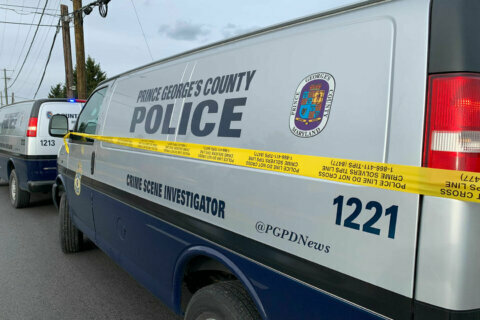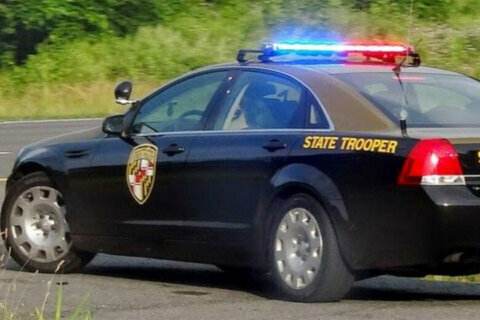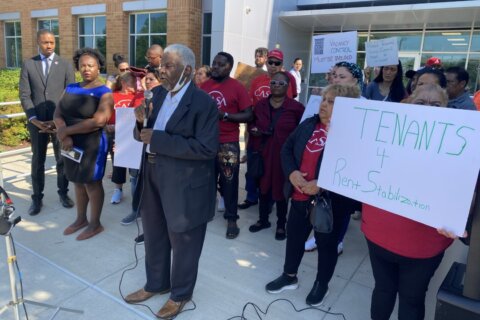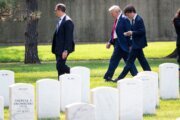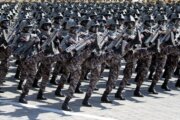WASHINGTON — When he went to work on Monday morning, Prince George’s County Fire Chief Marc Bashoor did something he thought he’d never have to do: try on a bulletproof vest.
His goal is to make them part of the standard equipment for his members.
“It’s kind of a sad commentary,” Bashoor said. “After the situation with Firefighters Ulmschneider and Swain taking bullets — even though they were just in the normal execution of their duty — it’s just the point we’re at now.”
The move comes the month after a shooting that killed one of Bashoor’s firefighters and injured a second. Referring to the death of 37-year-old John Ulmschneider and the wounding of 19-year-old Kevin Swain, Bashoor said, “It definitely puts a new challenge and twist on recruitment.”
Bashoor added that both the police and the fire departments lost members in fatal shootings while recruit classes were in session and that it had a direct effect on recruiting efforts.
“We did have a couple of recruits on the fire side that pretty shortly after the event decided this is not something that they wanted to do.” He’s referring to the call to a Temple Hills, Maryland area home where Ulmschnieder and Swain were shot as they arrived to fight a fire.
Bashoor referred to the vests as “ballistic protection.”
Dr. Lori Moore-Merrell, assistant to the general president in charge of operations and research at the International Association of Fire Fighters, explained that the vests defend wearers from large scale emergencies like active shooter situations that have become more common across the country.
“These are not for shrapnel or things you would see in a military-type event,” said Moore-Merrell. “We will be at some point in the near future outfitting our folks with ballistic protection. Kind of a sad commentary on where we are today,” she said.
Monday morning, Bashoor tweeted photos of himself trying on a ballistic vest. “It was an opportunity for me personally and my staff to try it on and get a feel for what kind of weight we’re talking about adding,” said Bashoor. “We already put 75 pounds on a firefighters’ back when they’re going into a burning building,” he said.
Never thought you’d see me wearing 1 of these. Receiving ballistic protection briefing for PGFD deployment pic.twitter.com/3hgKtEyGJv
— Marc Bashoor (@PGFD_Chief) May 23, 2016
The additional weight of a vest, which can add up to 4-5 pounds, could cut into the amount of time firefighters are allowed to battle a fire since the heavy gear, extreme temperatures and physical work can quickly deplete a firefighter’s energy.
Bashoor said there are a lot of issues to figure out including what kind of fit the department wants, wear and tear on crew members, and whether the vests stay on trucks or whether each crew member has a vest of their own as part of their standard gear.
Bashoor also said the next step is to sit down with what he called “internal stakeholders” — paramedics, volunteers and members of the firefighter’s union — about how the vests will be fitted, deployed and used.
When it comes to financing the new equipment, Bashoor explained that there are 900 paid firefighters and 1500 volunteers, which means that there would be upward of 2,400 vests that would have to be purchased.
To fights the costs, Bashoor said that the department could simply put them on firetrucks and ambulances so that whoever is working can wear them. Right now, his department is working with other departments where the vests are typically used on how it’s working for their members.


